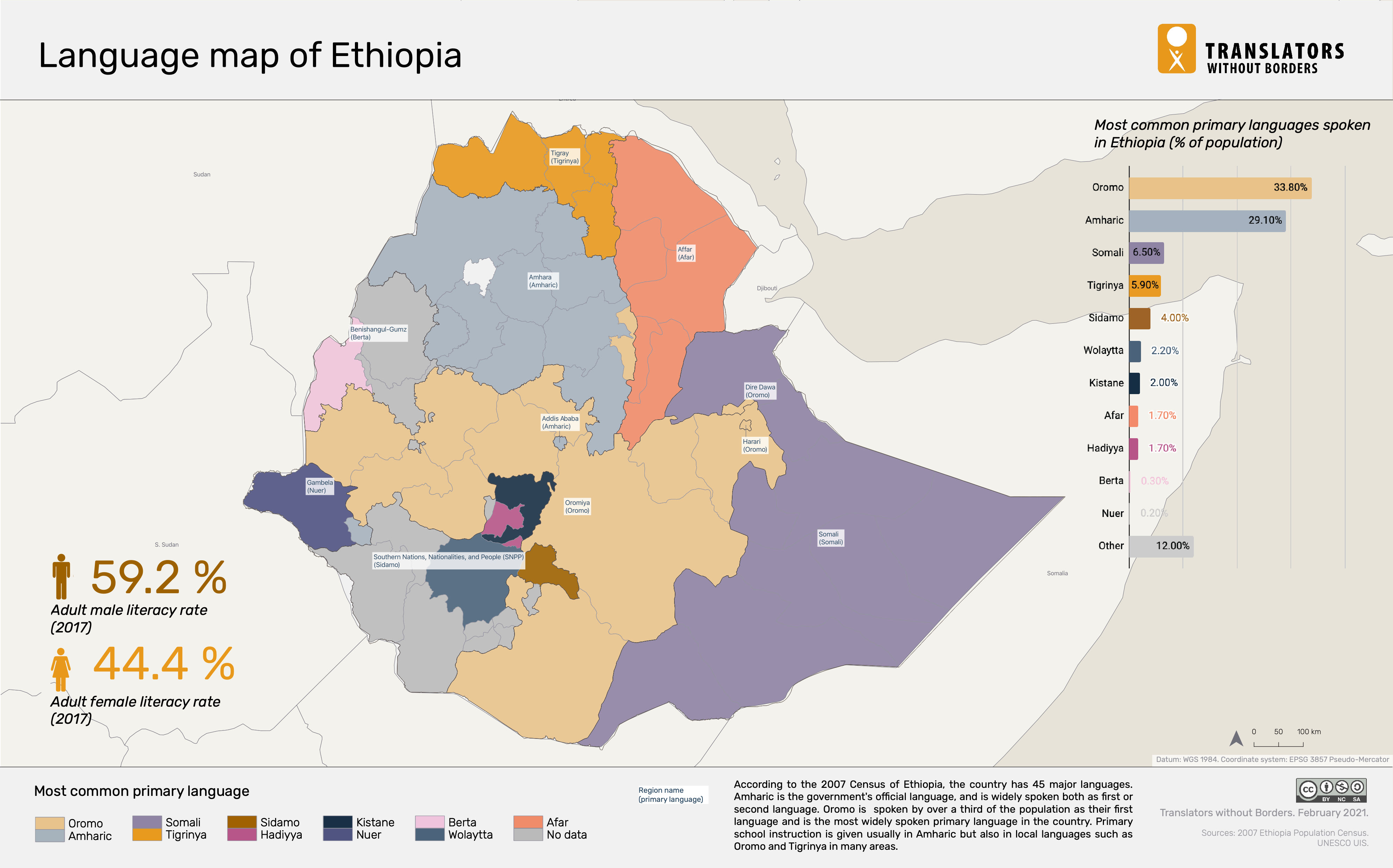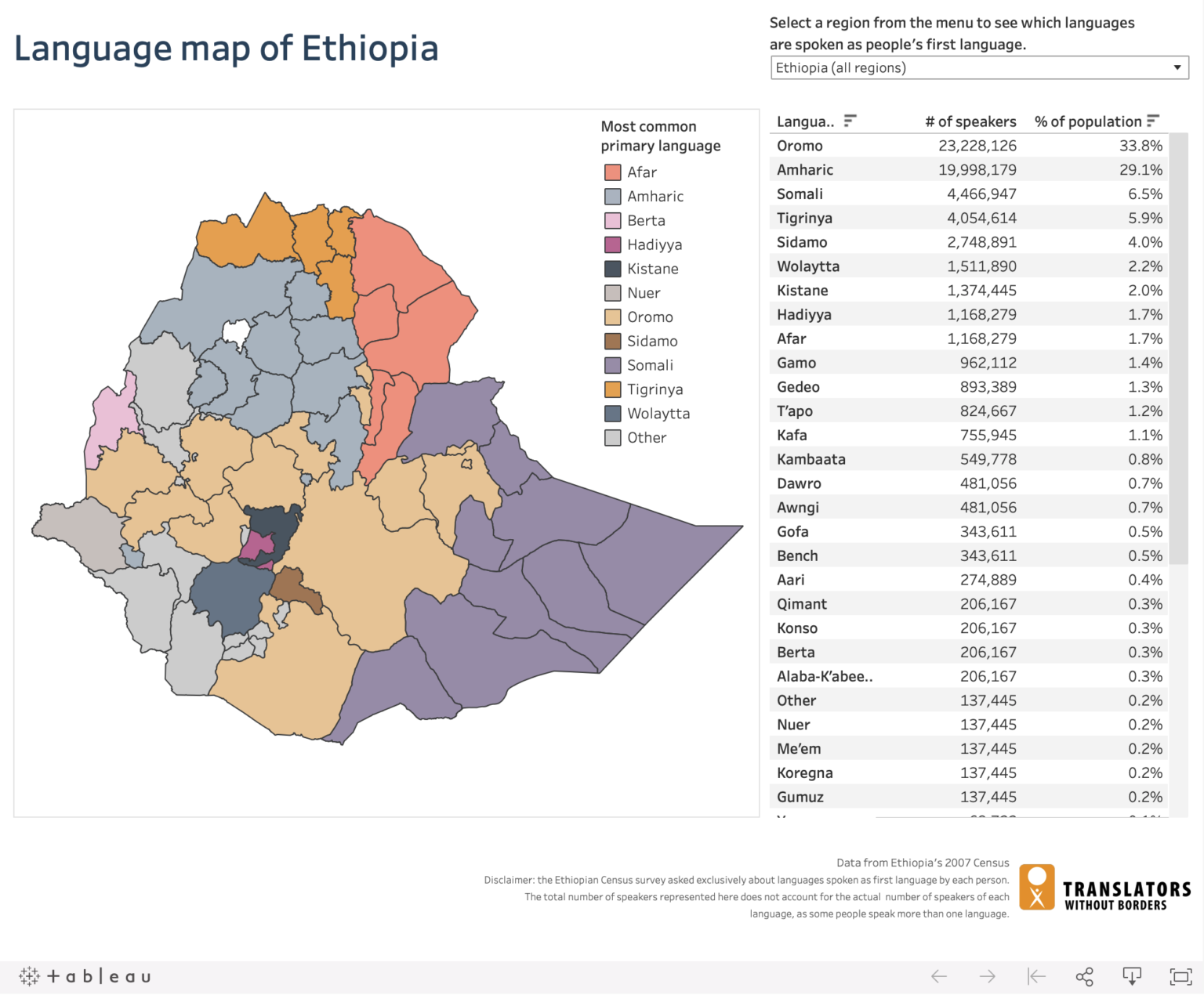What language do they speak in Ethiopia? This question delves into the heart of a nation’s rich linguistic tapestry, where over 80 languages coexist, each carrying the echoes of a distinct cultural heritage. Our journey begins with Amharic, the official language, and extends to the vibrant mosaic of regional tongues that shape the Ethiopian experience.
Ethiopia’s linguistic landscape is a testament to its diverse ethnic makeup, with major ethnolinguistic groups like the Oromo, Somali, and Tigrayan contributing their own unique linguistic contributions. The country’s educational system plays a crucial role in fostering language proficiency, while government initiatives aim to promote language development and preservation.
Official Languages of Ethiopia: What Language Do They Speak In Ethiopia
Ethiopia, a nation with a rich linguistic heritage, recognizes several official languages that play significant roles in government, education, and communication.
The primary official language of Ethiopia is Amharic, which has been the working language of the federal government since the 1990s. It is widely spoken in the central and northern regions of the country, including the capital city of Addis Ababa.
In addition to Amharic, several other languages enjoy official status in Ethiopia, each with its own geographic and cultural significance:
Regional Official Languages
- Oromo:Spoken by the Oromo people, the largest ethnic group in Ethiopia, primarily in the southern and western regions.
- Tigrinya:The native language of the Tigray people, spoken in the northern Tigray region and parts of Eritrea.
- Somali:Spoken by the Somali people, primarily in the southeastern Somali region, bordering Somalia.
- Afar:The language of the Afar people, spoken in the northeastern Afar region, bordering Eritrea and Djibouti.
- Sidama:Spoken by the Sidama people, primarily in the Sidama region in southern Ethiopia.
- Wolaytta:Spoken by the Wolaytta people, primarily in the Wolaytta Zone of the Southern Nations, Nationalities, and Peoples’ Region.
These regional official languages are used in local government, education, and media within their respective regions, fostering cultural diversity and linguistic preservation.
Major Ethnolinguistic Groups

Ethiopia is home to a diverse array of ethnic groups, each with its own distinct language and culture. The country’s linguistic landscape reflects this diversity, with over 80 languages spoken within its borders.
The major ethnolinguistic groups in Ethiopia can be broadly classified into four main families: Afro-Asiatic, Cushitic, Nilo-Saharan, and Omotic. Afro-Asiatic languages are spoken by the majority of the population, including the Amhara, Tigray, and Oromo peoples. Cushitic languages are spoken by groups such as the Somali and Afar, while Nilo-Saharan languages are spoken by the Nuer and Anuak peoples.
Omotic languages are spoken by groups such as the Wolayta and Gamo.
Geographical Distribution
The distribution of ethnolinguistic groups in Ethiopia is influenced by a variety of factors, including geography, history, and migration patterns. The Afro-Asiatic languages are primarily spoken in the northern and central highlands of the country, while the Cushitic languages are spoken in the eastern and southern lowlands.
The Nilo-Saharan languages are spoken in the western and southwestern regions, while the Omotic languages are spoken in the southwestern highlands.
| Ethnolinguistic Group | Language | Geographical Distribution |
|---|---|---|
| Amhara | Amharic | Northern and central highlands |
| Tigray | Tigrinya | Northern highlands |
| Oromo | Oromo | Central and southern highlands |
| Somali | Somali | Eastern and southern lowlands |
| Afar | Afar | Eastern lowlands |
| Nuer | Nuer | Western and southwestern regions |
| Anuak | Anuak | Western and southwestern regions |
| Wolayta | Wolayta | Southwestern highlands |
| Gamo | Gamo | Southwestern highlands |
Language Education and Literacy

The language education system in Ethiopia has undergone significant changes over the years, reflecting the country’s complex linguistic landscape and evolving educational policies.
During the imperial era, Amharic was the sole medium of instruction in schools, but this was challenged by the 1974 revolution, which emphasized the use of local languages in education. The current education policy, adopted in 1994, promotes multilingual education, with students learning in their mother tongue in the early grades and transitioning to Amharic or English as the medium of instruction in secondary school.
Literacy Rates and Language Proficiency
Literacy rates in Ethiopia have improved significantly over the past few decades, but there are still disparities across regions and linguistic groups. According to the 2019 Ethiopian Demographic and Health Survey, the national literacy rate for adults aged 15 and above is 49.1%, with higher rates in urban areas (65.7%) compared to rural areas (38.8%).
Language proficiency also varies depending on the region and level of education. In areas where Amharic is the dominant language, proficiency in Amharic is generally higher. However, in regions where other languages are spoken, proficiency in Amharic may be lower, particularly among older adults who had limited access to formal education.
Language Policy and Planning
Ethiopia has a complex and diverse linguistic landscape, with over 80 languages spoken within its borders. To address the challenges and opportunities presented by this linguistic diversity, the Ethiopian government has implemented various language policy and planning initiatives.
The primary goal of Ethiopia’s language policy is to promote linguistic diversity while ensuring effective communication and national unity. The government recognizes the importance of preserving and promoting indigenous languages, while also encouraging the use of Amharic as the official language for government, education, and other formal settings.
Role of Government and Educational Institutions
The Ethiopian government plays a crucial role in language policy and planning. It establishes language policies, develops language curricula, and provides funding for language research and development.
Educational institutions also play a significant role in promoting language development and use. Schools offer instruction in both Amharic and local languages, and they encourage students to learn additional languages. Universities offer programs in linguistics, language teaching, and translation, and they conduct research on language-related issues.
Language and Culture
In Ethiopia, the intricate relationship between language and culture is a testament to the country’s rich tapestry of ethnicities and traditions. Language serves as a mirror, reflecting and shaping the cultural fabric of Ethiopian society.
The diversity of Ethiopian languages mirrors the nation’s cultural mosaic. Each language carries unique nuances and expressions, reflecting the distinct worldviews and experiences of its speakers. For instance, the Amharic language, widely spoken in the central highlands, is known for its rich vocabulary and complex grammatical structures, reflecting the region’s long history of literary and cultural achievements.
Language and Cultural Identity
Language plays a pivotal role in shaping cultural identity. In Ethiopia, ethnic groups often identify themselves primarily through their native language. Language serves as a marker of belonging, fostering a sense of community and shared heritage. For example, the Oromo people, the largest ethnic group in Ethiopia, take pride in their distinct Oromo language, which serves as a symbol of their cultural identity and a source of unity.
Language and Cultural Transmission, What language do they speak in ethiopia
Language is an indispensable medium for transmitting cultural traditions and knowledge across generations. Through oral storytelling, songs, and proverbs, Ethiopian languages preserve and pass down cultural values, beliefs, and practices. The Ge’ez language, an ancient liturgical language still used in Ethiopian Orthodox Christianity, carries a rich repository of religious texts and historical chronicles, providing a vital link to the nation’s spiritual and historical heritage.
Language and Communication
Ethiopia’s linguistic diversity presents both challenges and opportunities for communication and social interactions. The use of multiple languages can lead to misunderstandings, communication barriers, and social divisions. However, it also fosters cultural richness, promotes understanding of diverse perspectives, and strengthens national unity.
Challenges of Language Use
- Communication Barriers:The use of different languages can hinder effective communication, especially in official settings, education, and healthcare, where clear and accurate information exchange is crucial.
- Social Divisions:Language can sometimes be associated with ethnic or regional identities, leading to social divisions and conflicts.
- Educational Disparities:Students from linguistic minority groups may face challenges accessing education in their native languages, leading to educational disparities.
Opportunities of Language Use
- Cultural Richness:Ethiopia’s linguistic diversity contributes to its rich cultural heritage, fostering a vibrant tapestry of traditions, customs, and beliefs.
- Understanding Diverse Perspectives:Learning and understanding different languages allows individuals to gain insights into diverse cultural perspectives, fostering empathy and understanding.
- National Unity:Despite the challenges, Ethiopia’s diverse languages also serve as a unifying force, creating a sense of shared identity and belonging among its citizens.
Endangered Languages
Ethiopia is home to a vast linguistic diversity, but several languages are facing threats of extinction due to various factors. These endangered languages require urgent attention and revitalization efforts to preserve the rich cultural heritage they represent.
Factors contributing to language decline include:
- Socioeconomic changes, such as urbanization and modernization, lead to language shift towards dominant languages.
- Education systems that prioritize major languages, resulting in limited opportunities for endangered language use.
- Language contact and influence from dominant languages, leading to language assimilation and loss.
Strategies for Language Revitalization and Preservation
To revitalize and preserve endangered languages, several strategies can be implemented:
- Documenting and archiving languages through recordings, transcriptions, and research.
- Promoting language use in education, media, and community events.
- Supporting language learning programs and initiatives.
- Encouraging intergenerational language transmission through community involvement.
- Advocating for language rights and recognition at policy levels.
By implementing these strategies, Ethiopia can work towards preserving its linguistic diversity and ensuring the survival of endangered languages.
Final Conclusion

The languages of Ethiopia are not merely tools of communication but also threads that weave together the nation’s cultural fabric. They reflect the country’s historical, social, and political dynamics, shaping identities and connecting communities. Understanding the linguistic diversity of Ethiopia is essential for appreciating the richness and complexity of this ancient land.
Question Bank
What is the official language of Ethiopia?
Amharic is the official language of Ethiopia, used in government, education, and media.
How many languages are spoken in Ethiopia?
Over 80 languages are spoken in Ethiopia, reflecting its diverse ethnic makeup.
What are the major ethnolinguistic groups in Ethiopia?
The Oromo, Somali, and Tigrayan are among the major ethnolinguistic groups in Ethiopia, each with its own distinct language.